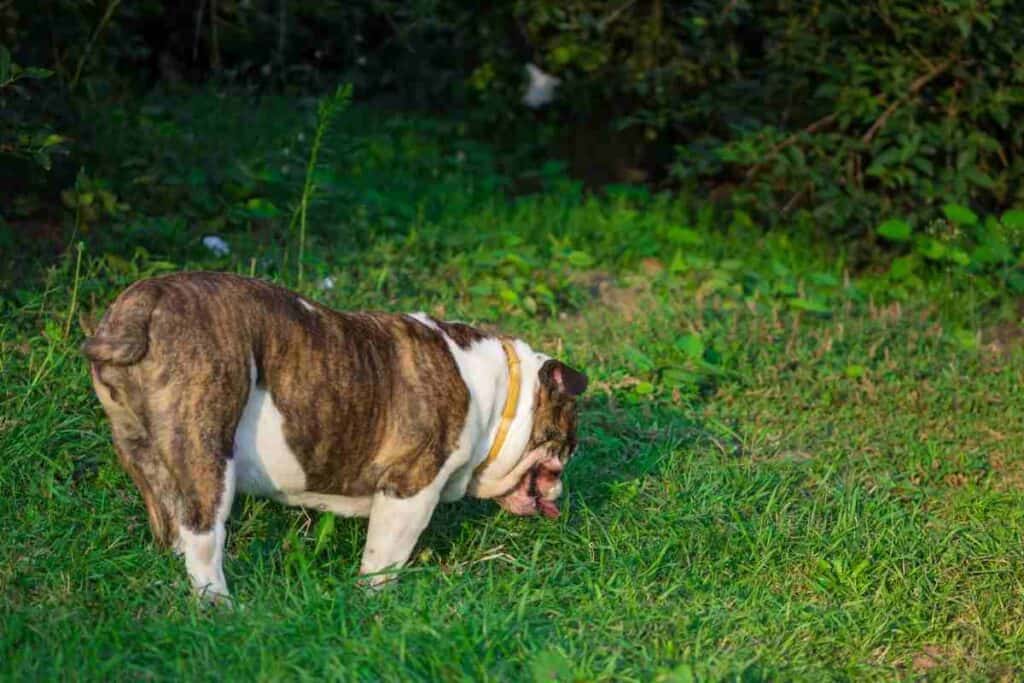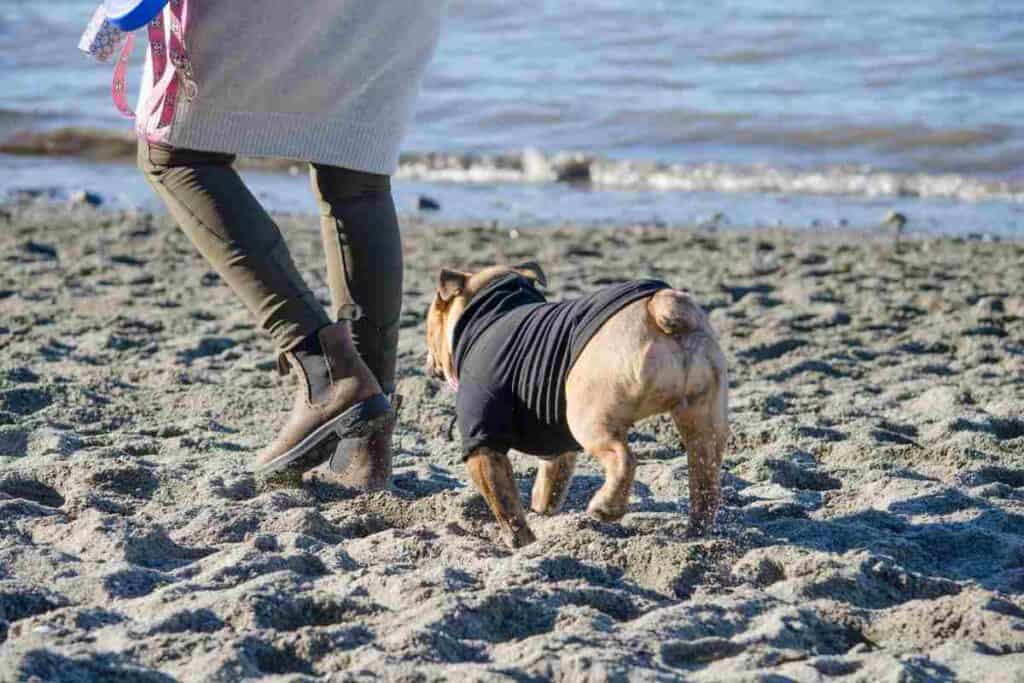Do Bulldogs Have Tails?
I want to get a dog for my children, one that is not too big, but big enough for them to love. My kids saw a bulldog at the park while visiting their grandparents and fell in love with it. They couldn’t recall if it had a tail, and if so, what kind of tail.
So I decided to research and find out for myself, here is what I found.
Do bulldogs have tails?
Do bulldogs have tails? Yes, bulldogs do have tails. These tails can come in a variety of types from the short or curly type, to longer, straight, or wavy tail type. These tail variations can be surprising for most when they think of or see a bulldog, but rest assured each bulldog is unique when it comes to their tail.
A tail, like the personality of the bulldog, is unique and special. When selecting a dog breed, there are many considerations to be made. Appearance is just part of this process that a potential dog owner may consider. How a dog’s tail looks is one area of that consideration.
It is a common misconception that some dogs don’t have tails. All dogs have tails, some aren’t as lucky as the bulldog to have such a wide variety of tails to follow them about, but having a tail is a guarantee.
For the bulldog, their tails can sometimes look invisible or non-existent because it is so small. This sometimes invisible tail can give a person the thought that some dogs don’t have tails.
The bulldog is a breed with a variety of tail types that are as individual as the breed itself.
Are bulldogs born without tails?
No. Bulldogs are born with a tail that is usually short, but this depends on the individuality of the dog itself. Every dog has a tail, due to its size it may just appear that they don’t have one.
What style tails can bulldogs have?
There are a few tail styles for the bulldog. What most people think of as the bulldog tail is a short, bobbed tail, but this isn’t always the case.
The rarest tail type for a bulldog is the wavy or long tail. This style is often considered flawed but is likely one of the healthiest for wagging purposes. This tail is the most natural and free-flowing tail but is not considered an acceptable tail according to American Kennel Club standards.
A corkscrew tail is probably the most common tail type associated with the bulldog. It has a slope downwards and wraps around in, you guessed it, a corkscrew shape. This style tail becomes more fixated and hard with age and is often the most adorable. Many people think of this tail type when they think of the bulldog.

Finally, there is a straight tail that can look similar to the handle of a pump. This tail type is the most natural and sought after. This type is most appealing when it comes to the American Kennel Club for those who want to show their adorable bulldog.
With this last type, the bulldog can have a tail that is set higher on their body and points upwards. This positioning is usually considered a flaw in this breed of dog. It is still the healthiest type of tail that is very natural for the dog.
What is tail docking?
Tail docking is a medical procedure performed by a veterinarian. This procedure is performed to either completely cut off a dog’s tail or remove part of the dog’s tail.
This procedure is usually performed for medical reasons but can also be for aesthetic purposes and appearance. In some countries, it is illegal to perform this procedure for appearance’s sake.
Docking was also historically used to enhance the strength and speed of certain dog breeds while preventing injuries to them when they performed dangerous tasks.
Today thorough research has been done. Studies are finding that the tail serves more purpose than just looking cute.
For all dog breeds, it can be a way of communication between dogs. Without it, a dog can not express such vital emotions as fear or aggression.
Certain dog breeds are highly athletic and spend a great deal of time running or swimming. Docking their tail can make them less efficient at these tasks, and this can increase their chance of being injured.
Do bulldogs have their tails docked?
Yes and no. Bulldogs can sometimes suffer from health issues related to their tail, in particular the corkscrew tail. With age, the tail itself tightens up and can become very hard. It can cause sores and skin issues for bulldogs that already tend to suffer. In worst-case scenarios, it can even cause infections.
Veterinarians will often recommend docking as a way to prevent these health issues since this breed already tends to suffer from a lot of health problems.
What does a bulldog’s tail look like?
A bulldog’s tail can look rather short and sometimes stubby, that is one of the reasons why many people believe that a bulldog has a docked tail.
A bulldog’s tail, however, can come in many types, as noted above, and no one type is right or wrong unless the owner is planning on putting them in the show ring.

What medical conditions might cause a bulldog to have a docked tail?
Bulldogs can suffer a wide variety of health problems throughout their lives. Such issues as skin infections, breathing problems, and hip dysplasia are just a few.
They can also suffer issues concerning their tail. Bulldogs have numerous skin folds that need regular cleaning to prevent health issues and infections. If the adorable corkscrew tail hardens up as they age, it can become difficult to clean, and this increases the risk that they already have.
Bulldogs can also have tight and impacted anal glands, and this can result in a horrible odor and be quiet painful to the dog. They can also suffer from numerous infections and problems in their rump area. One such health problem is the ingrown tail.
An ingrown tail; is treated by the dog’s veterinarian. The veterinarian will prescribe a topical cream. The bulldog can continue to be an ongoing problem for the dog since this breed is predisposed to these types of issues.
If the dog hasn’t had their tail docked and they suffer from these reoccurring conditions throughout adulthood, their veterinarian may recommend removing part or all of their tail. This procedure is to ease their symptoms, creating a less troublesome and stressful life for them.
These health problems are one of the reasons many veterinarians recommend docking their tail.
Is tail docking painful to the dog?
Yes, it can be painful for the dog. Qualified breeders and veterinarians will often recommend this procedure be performed early in the first weeks of a puppy’s life for this reason. If performed by a qualified veterinarian, they treat this pain using medications since it can be quite stressful to the dog.
Can a bulldog’s tail affect how they sit and play?
Yes, a bulldog’s tail can affect how they sit or play. The type of tail the bulldog has at birth will determine if the bulldog will suffer future problems with their daily activities later on in life.
For the bulldog that ends up with the short or curly tail, they can be prone to health problems.
If they don’t dock the dog’s tail, the bulldog can suffer from infections and skin problems. Medication is always prescribed, for these health problems. If they get sore or it becomes a problem, it can affect the comfort of the dogs sitting down.

Issues can also affect playtime. If the bulldog has a sore or tender rump due to infection or hardening of their tail, it can make this area uncomfortable at pretty much any time of the day.
Addressing issues related to this area of their body can ensure that they are as happy as any bulldog can be.
Is there a difference in the tail of an English bulldog and American bulldog?
Yes, there is a difference. For an English bulldog, it is more common to see the shorter corkscrew type of tail. In the American bulldog, it is often more common to see the straight kind of tail that can look like the handle of the pump.
The American bulldog can suffer a lot of fewer issues related to their tail, for this reason. The English bulldog can suffer more because of their curly, corkscrew tail.
In Conclusion
While every dog has a tail, each is as unique as the dog itself.
For the bulldog, the tail types they can have are varied. The English and American bulldog have their unique traits regarding their tails, with the English bulldog having the most potential for problems.
The bulldog chosen will determine if docking is an appropriate practice for health reasons.
One thing is for sure, the bulldog is a unique dog breed, right down to their tails!
